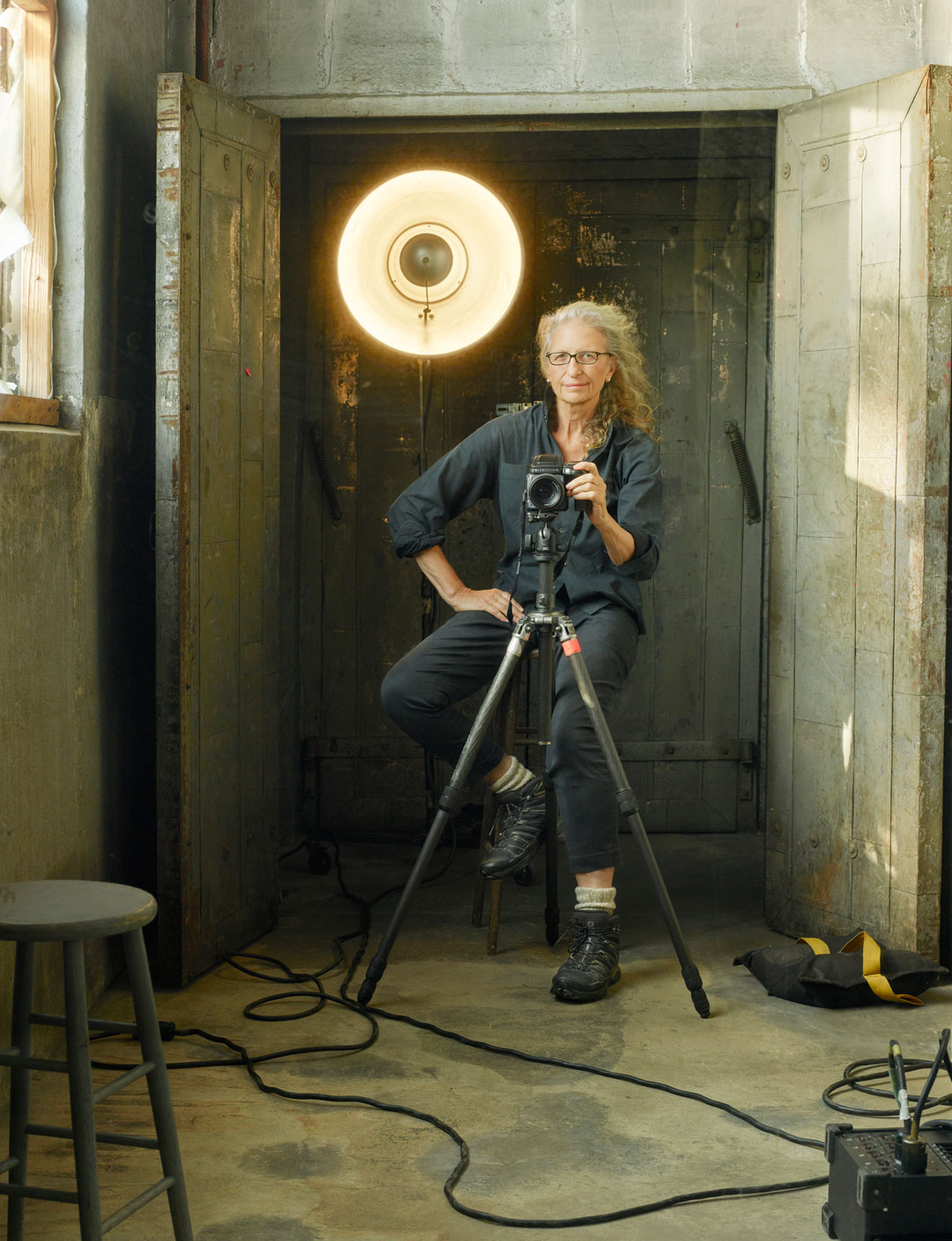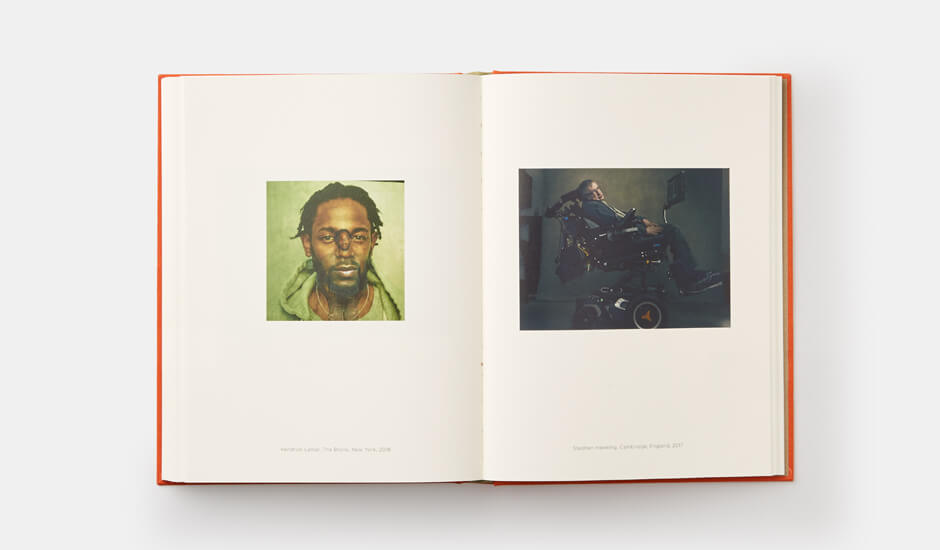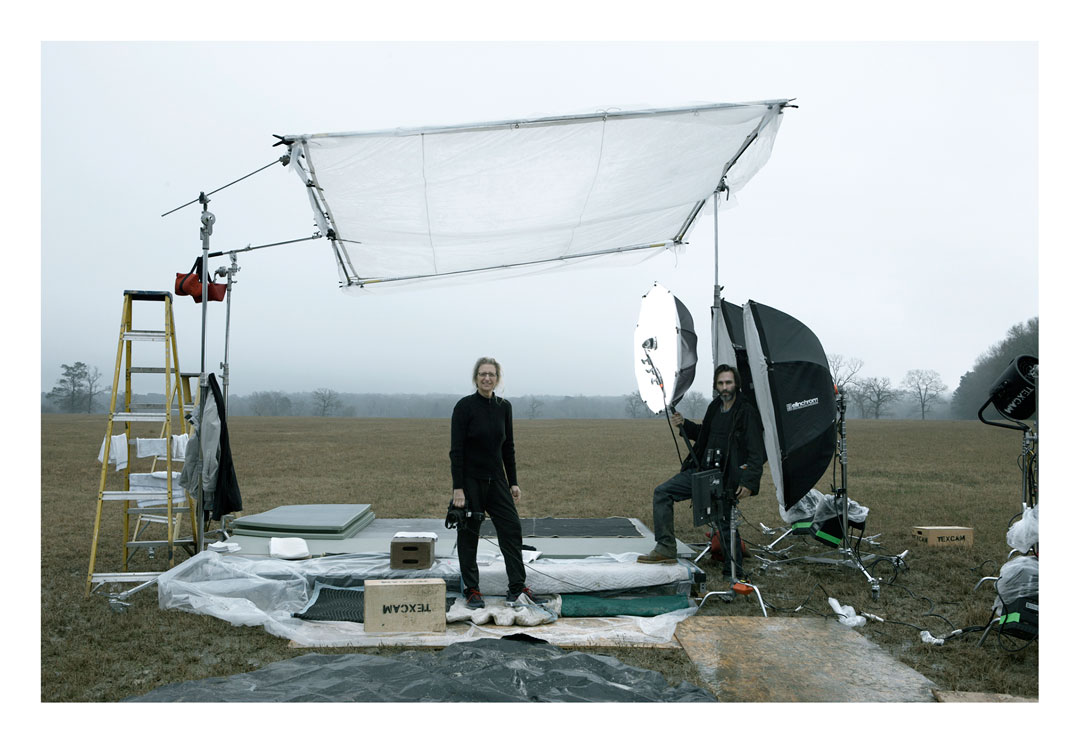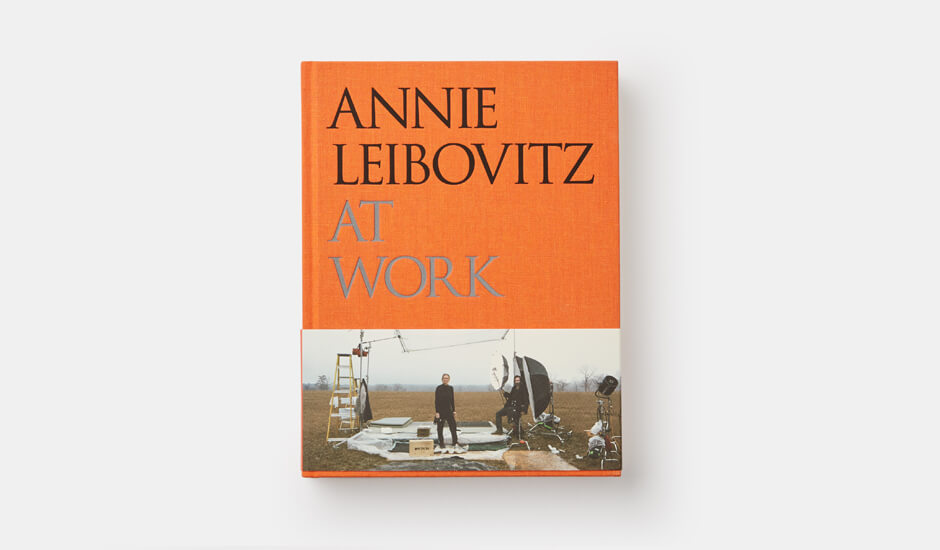
Annie Leibovitz on Hockney, Lennon and Instagram
The photographer talks through her life, career and new book with US radio host Lois Reitzes
David Hockney helped Annie Leibovitz think outside the box. As the photographer told radio host Lois Reitzes in a recent interview, to coincide with the publication of her new book Annie Leibovitz at Work, Hockney’s photo collages were ground-breaking, because they attempted to truly capture how we see the world. “The eye doesn’t just see in a rectangle or a square,” Leibovitz explained, “it sees a little to the right or left, the peripheral.”
For some years, Leibovitz tried to adopt some of Hockney’s technique. “I shot to the left and to the right and I put them together,” she explained. This wasn’t entirely successful, she recalls, “It was useless for spontaneity.”
Nevertheless, the anecdote shows the photographer has, over the years, pushed her technique in order to develop her style. Her new book, draws from another great practitioner: Ansel Adams. As Leibovitz says, she was inspired by Adams’ 1983 book, Examples, in which he took 40 of his best-known pictures and describes how they were shot.
Her new title features many more images, but the principle remains the same. “I’d be besieged by young photographers, who wanted to know how I did my pictures,” she said. “It’s time to write about the making of my photographs.”

Some anecdotes range far beyond lighting and exposure times. In Reitzes’ interview Leibovitz recalls photographing John Lennon in 1980, hours before he was shot. The assignment came from Rolling Stone, and was staged to coincide with John and Yoko Ono’s new album, Double Fantasy. Rolling Stone’s editor, Jann Wenner, had insisted that Leibovitz shoot just Lennon, but when the photographer met up with the Beatle, he insisted that both he and his wife were in the shot.
“I said, 'Well, if we’re going to do that, we’ve got to do something really good,'” Leibovitz recalls. The resulting image, of a naked Lennon embracing a fully clothed Ono, made it onto Rolling Stone’s cover, in an issue dedicated to Lennon’s life and death.
While Leibovitz still loves seeing her work in print - and still admires the photojournalism published in the New York Times and the Washington Post – she acknowledges there's a place for Instagram and cell phone cameras.

“I’ve never used Instagram myself, but you cannot underestimate the convenience of having a camera in your pocket,” she says. “I remember seeing Vanessa Redgrave back stage, and she pulls out her phone and shows me a picture of her grandchildren. My children can take pictures of their friends, and they can see themselves and come to terms with who they are. Photography is so broad and big, there’s room for all of this.”

To appreciate the significant place Leibovitz has found for herself within the photographic medium, buy a copy of Annie Leibovitz At Work here.